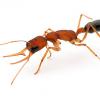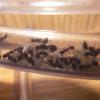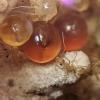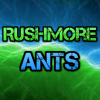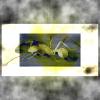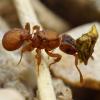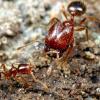Thanks for the detailed answers (and i'd love to get The Superorganism sometime!), but I'm asking more about the mechanism by which the ants make these decisions, and how it compares to human voting systems. Like, is it just the strongest and most abundant pheromone goes, or is there some voting hierarchy, how much of a say does an ant from a given caste or role have, or what?
They don't  Ants have no higher decision making process or at least none have been observed. It's much too complex to sum it up in a forum post as there are countless influencing factors and various factor prioritizations depending on the species, and that's not counting the fact that we still don't know a whole lot about the subject. So for a simple answer, ants take in many, many environmental cues, like water entering the nest, airflow, vibrations, season, or temperature and social cues, like population count, individual caste population, colony age, and the activities of other ants, and those trigger different reactions. It's not a simple if 1 then 2 process either, countless reaction and stimuli are layered on top of each other in different levels of priority. For example: in Pheidole, majors are normally reserved as a defense or food milling caste. In a normal colony they barely do any work. But if you remove the majority of the minors, the majors will sense that population difference and begin to fill in the roles the minors played. That's an example of a population cue. An environmental cue would be like how some tropical Pheidole immediately evacuate the nest if a single water droplet is placed at the entrance; the species is highly sensitive to potential flooding and as such places concentrations of water higher up on the priority list than other ants do.
Ants have no higher decision making process or at least none have been observed. It's much too complex to sum it up in a forum post as there are countless influencing factors and various factor prioritizations depending on the species, and that's not counting the fact that we still don't know a whole lot about the subject. So for a simple answer, ants take in many, many environmental cues, like water entering the nest, airflow, vibrations, season, or temperature and social cues, like population count, individual caste population, colony age, and the activities of other ants, and those trigger different reactions. It's not a simple if 1 then 2 process either, countless reaction and stimuli are layered on top of each other in different levels of priority. For example: in Pheidole, majors are normally reserved as a defense or food milling caste. In a normal colony they barely do any work. But if you remove the majority of the minors, the majors will sense that population difference and begin to fill in the roles the minors played. That's an example of a population cue. An environmental cue would be like how some tropical Pheidole immediately evacuate the nest if a single water droplet is placed at the entrance; the species is highly sensitive to potential flooding and as such places concentrations of water higher up on the priority list than other ants do.


